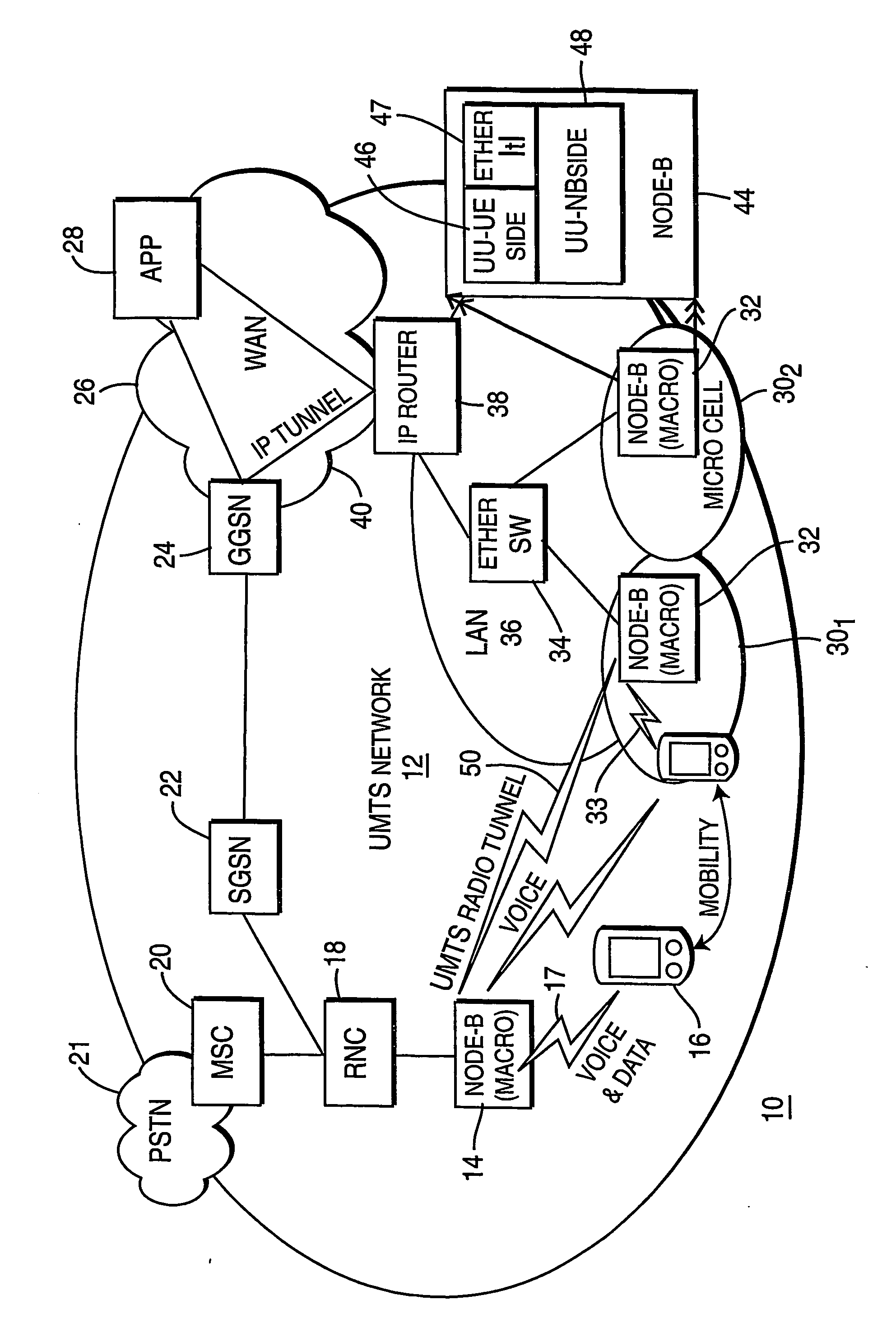Overlay micro cell structure for universal mobile telephone system network
a micro cell and universal mobile telephone technology, applied in data switching networks, wireless communication, digital transmission, etc., can solve the problems of increasing the number of subscribers, significantly increasing equipment and deployment costs, and increasing the capacity of the umts network. , to achieve the effect of increasing the capacity of the umts network and low cos
- Summary
- Abstract
- Description
- Claims
- Application Information
AI Technical Summary
Benefits of technology
Problems solved by technology
Method used
Image
Examples
Embodiment Construction
[0009]FIG. 1 illustrates a block schematic diagram of a wireless communications system 10 in accordance with a preferred embodiment of the present principles. The system 10 includes a wireless network 12, which preferably has an architecture corresponding to that described in the well-known Universal Mobile Telephone System (UMTS) standard. Accordingly, the network 12 bears the designation “UMTS network.” Within the UMTS network 12, there exists at least one, and preferably, a plurality of macro cells, each comprising a radio access node 14 which is some times referred to as a “Node B.” Each radio access node 14 includes a radio transceiver (not shown) capable of exchanging both voice and data traffic with a mobile communications device 16 across a wireless link 17. The mobile communications device 16 can include a wireless telephony handset, a wireless Personal Data Assistant (PDA) or a personal computer having a wireless modem.
[0010] Within the UMTS network 12, each radio access ...
PUM
 Login to View More
Login to View More Abstract
Description
Claims
Application Information
 Login to View More
Login to View More - R&D
- Intellectual Property
- Life Sciences
- Materials
- Tech Scout
- Unparalleled Data Quality
- Higher Quality Content
- 60% Fewer Hallucinations
Browse by: Latest US Patents, China's latest patents, Technical Efficacy Thesaurus, Application Domain, Technology Topic, Popular Technical Reports.
© 2025 PatSnap. All rights reserved.Legal|Privacy policy|Modern Slavery Act Transparency Statement|Sitemap|About US| Contact US: help@patsnap.com


